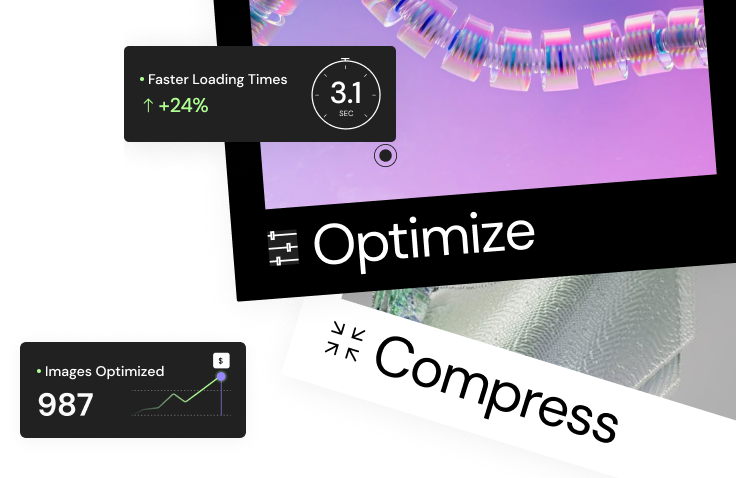Instagram isn’t just for sharing vacation photos anymore. It’s a powerful platform for creators, entrepreneurs, and businesses to connect with audiences and, yes, generate real income. As we move through 2025, the opportunities have only grown. If you want to leverage your Instagram presence for financial gain, you need a solid strategy. This guide explores ten effective ways you can make money on Instagram this year. It provides actionable steps and insights to get you started. Let’s dive in.
Why Instagram Remains a Goldmine in 2025
Before we jump into the “how,” let’s quickly touch on the “why.” Why focus on Instagram for making money in 2025?
- Massive & Engaged User Base: Instagram continues to boast over two billion monthly active users globally. More importantly, users are highly engaged. They spend significant time scrolling feeds, watching Stories and Reels, and interacting with accounts they follow.
- Visual Storytelling Power: It’s a visual-first platform. This makes it ideal for showcasing products, services, and brand personalities in compelling ways that text alone cannot match. High-quality visuals grab attention instantly.
- E-commerce Integration: Features like Instagram Shopping allow businesses to tag products directly in posts and Stories. This creates a seamless path from discovery to purchase, often without users needing to leave the app initially.
- Direct Connection: Instagram helps you interact directly with your audience through comments, DMs, Stories stickers, and Live sessions. This builds community and trust, which are essential for any effort to make money.
Simply put, Instagram offers a unique blend of reach, engagement, visual appeal, and direct connection. This makes it a prime channel for various income streams.
Instagram’s huge, engaged audience, visual nature, shopping features, and direct communication tools make it a top platform for earning money online in 2025.
Grow Your Sales
- Incredibly Fast Store
- Sales Optimization
- Enterprise-Grade Security
- 24/7 Expert Service
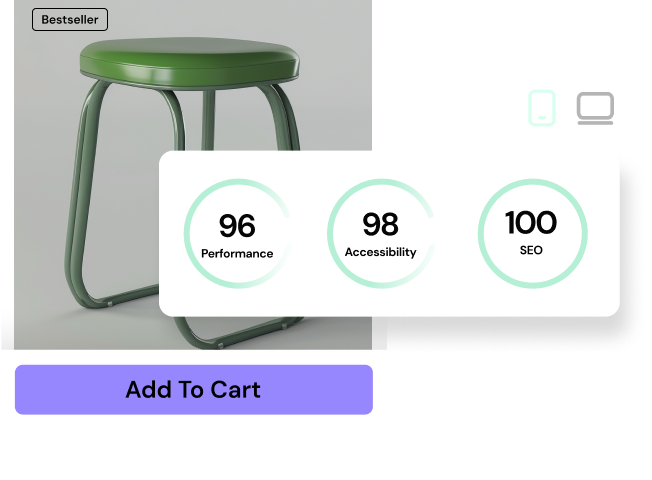
- Incredibly Fast Store
- Sales Optimization
- Enterprise-Grade Security
- 24/7 Expert Service
- Prompt your Code & Add Custom Code, HTML, or CSS with ease
- Generate or edit with AI for Tailored Images
- Use Copilot for predictive stylized container layouts
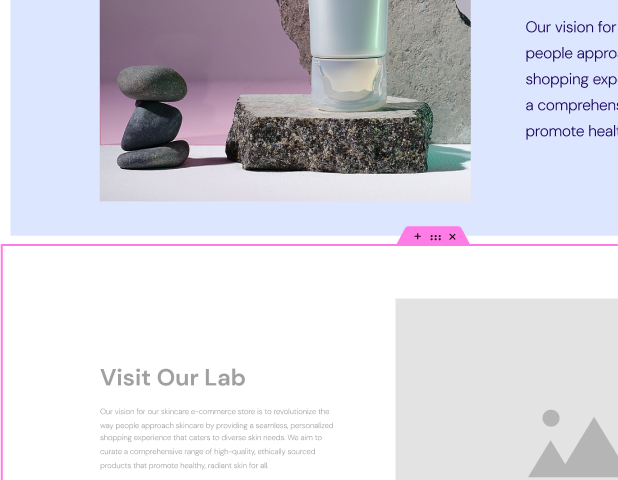
- Prompt your Code & Add Custom Code, HTML, or CSS with ease
- Generate or edit with AI for Tailored Images
- Use Copilot for predictive stylized container layouts
- Craft or Translate Content at Lightning Speed
Top-Performing Website
- Super-Fast Websites
- Enterprise-Grade Security
- Any Site, Every Business
- 24/7 Expert Service
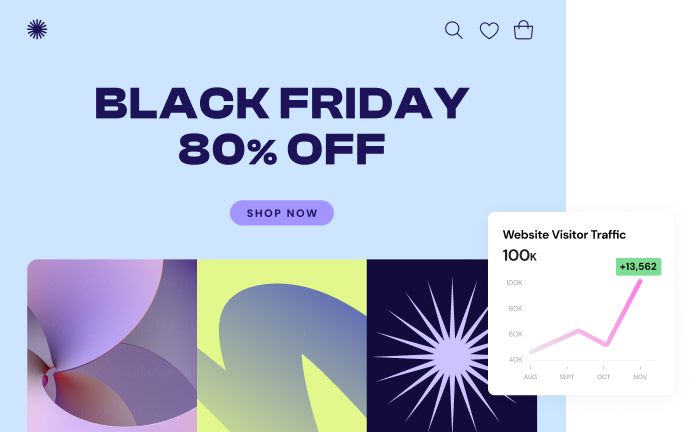
Top-Performing Website
- Super-Fast Websites
- Enterprise-Grade Security
- Any Site, Every Business
- 24/7 Expert Service
- Drag & Drop Website Builder, No Code Required
- Over 100 Widgets, for Every Purpose
- Professional Design Features for Pixel Perfect Design
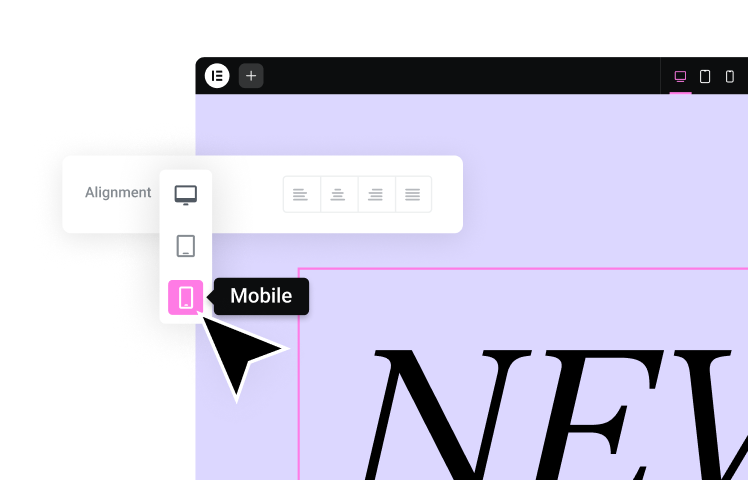
- Drag & Drop Website Builder, No Code Required
- Over 100 Widgets, for Every Purpose
- Professional Design Features for Pixel Perfect Design
- Marketing & eCommerce Features to Increase Conversion
- Ensure Reliable Email Delivery for Your Website
- Simple Setup, No SMTP Configuration Needed
- Centralized Email Insights for Better Tracking

- Ensure Reliable Email Delivery for Your Website
- Simple Setup, No SMTP Configuration Needed
- Centralized Email Insights for Better Tracking
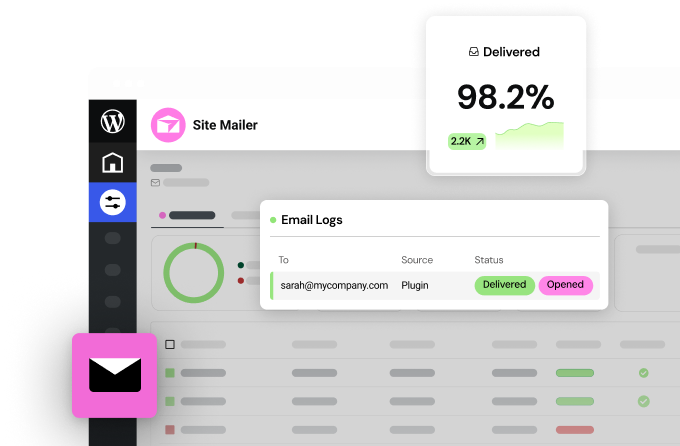
- Ensure Reliable Email Delivery for Your Website
- Simple Setup, No SMTP Configuration Needed
- Centralized Email Insights for Better Tracking
Foundational Steps: Setting the Stage for Success
Hold on! Before you start thinking about dollar signs, you need a strong foundation. Skipping these steps is like building a house on sand – it will not hold up.
Define Your Niche and Target Audience
Who are you trying to reach? What specific topic or industry will you focus on? Trying to appeal to everyone usually means appealing to no one.
- Identify Your Passion & Expertise: What do you genuinely enjoy talking about? What knowledge or skills do you have? Authenticity resonates.
- Research Market Demand: Is there an audience interested in your chosen niche? Are other creators successful in this space? (Do not be deterred by competition; it often confirms demand).
- Understand Your Ideal Follower: Who are they? What are their interests, pain points, and goals? Create a clear picture of the person you want to connect with. This shapes your content and monetization strategy.
Why it matters: A well-defined niche attracts a dedicated audience. This audience is more likely to engage with your content and trust your recommendations or buy your offerings.
Optimize Your Instagram Profile
Your profile is your digital storefront or business card on Instagram. Make it count.
- Professional Profile Picture: Use a clear, high-quality photo of yourself (if a personal brand) or your logo (if a business).
- Compelling Bio: You have limited characters. Clearly state who you are, what you do, and who you serve. Include relevant keywords. Use emojis to add personality if it fits your brand.
- Strategic Call-to-Action (CTA) & Link: Your bio link is precious real estate. Do not just link to your website homepage.
- Use a link-in-bio tool (like Linktree, Taplink, or Beacons) to hold multiple important links.
- Even better, create a custom landing page on your own website. This gives you full control over branding and analytics. You can easily build a sleek, mobile-friendly landing page using tools like Elementor. This lets you direct followers exactly where you want them to go – whether it is a shop, a specific blog post, a service page, or a lead magnet signup.
- Clearly tell people why they should click the link (e.g., “Shop my latest collection ????”, “Grab your free guide here ????”).
Why it matters: An optimized profile makes a strong first impression. It clearly communicates your value and guides potential customers or clients to the next step.
Build an Engaged Community (Not Just Followers)
Vanity metrics like follower count mean little if your audience is not engaged. Focus on building real connections.
- Consistent, High-Quality Content: Post regularly (find a schedule you can stick to). Ensure your photos, videos, and captions provide value, entertainment, or inspiration to your target audience. Mix up formats: Feed posts, Stories, Reels, Lives.
- Engage Actively: Respond to comments and DMs promptly. Ask questions in your captions and Stories. Run polls and quizzes. Go Live to interact in real-time. Engage with other accounts in your niche.
- Authenticity is Key: Be yourself. Share behind-the-scenes glimpses. People connect with real people.
Why it matters: An engaged community trusts you and looks forward to your content. They are far more likely to support your efforts to earn money.
Understand Instagram’s Ever-Evolving Features
Instagram constantly updates its platform. Stay informed about how different features work and how you can use them.
- Reels: Short-form video is huge for reach and discovery. Use trending audio, creative edits, and provide value quickly.
- Stories: Perfect for informal, behind-the-scenes content, polls, Q&As, and driving traffic via link stickers (if you are eligible).
- Feed Posts: Still crucial for high-quality photos and carousels that offer deeper value or visual appeal.
- Instagram Live: Great for real-time interaction, Q&As, workshops, and building connections. Supports features like Live Badges for direct support.
- Instagram Shopping: Essential if you sell physical products. Tag items, create collections, and let users browse and buy.
- Guides: Curate useful information, tips, or product recommendations in an easy-to-read format.
Why it matters: Using the right features strategically helps you reach more people. It also helps you engage them effectively and use different monetization methods.
Success on Instagram requires defining your niche and optimizing your profile (especially the link, perhaps using custom landing pages). You also need to build a genuinely engaged community through consistent value and interaction, and understand how to use Instagram’s various features.
10 Effective Ways to Make Money on Instagram in 2025
With a solid foundation in place, let’s explore the specific strategies to turn your Instagram presence into an income source.
1. Become an Influencer (Sponsored Content)
This is often the first method people think of when considering making money on Instagram.
What it is
Brands pay you to feature their products or services in your posts, Stories, or Reels. You use the trust and attention of your audience to promote something relevant.
How it works
- Build Influence: You need a reasonably sized, engaged following in a specific niche. Brands look for creators whose audience matches their target customer. Micro-influencers (those with smaller, highly engaged followings) are increasingly valuable.
- Find Brands: Reach out to brands you genuinely like and use. Or, join influencer marketing platforms (like AspireIQ, Upfluence, Grin). Brands might also reach out to you directly if your profile is well-optimized.
- Negotiate Rates: Rates depend on follower count, engagement rate, content type, usage rights, and campaign scope. Have a media kit ready. This is a document showcasing your stats, audience demographics, past collaborations, and rates. You can host it as a page on your website.
- Create Content: Produce high-quality, authentic content that aligns with the brand’s goals but still feels natural to your feed and audience.
- Disclose Clearly: Always use disclosure hashtags like #ad or #sponsored. You can also use Instagram’s Branded Content tool. Transparency is legally required and crucial for keeping audience trust.
Potential Challenges
- Maintaining authenticity while promoting products.
- Finding brands that truly align with your values.
- Dealing with income that changes based on campaigns.
Key Takeaway: Focus on building genuine influence. Only partner with brands you trust to maintain authenticity.
2. Affiliate Marketing
Instead of a flat fee per post, you earn a commission for sales made through your unique referral link or code.
What it is
You promote other companies’ products or services using trackable links. When someone clicks your link and makes a purchase, you get a percentage of the sale.
How it works
- Find Affiliate Programs: Many brands have their own programs (check their websites). Affiliate networks like Amazon Associates, ShareASale, CJ Affiliate, and Rakuten Advertising host programs for thousands of companies.
- Get Your Links/Codes: Once approved, you will receive unique URLs or discount codes to share.
- Promote Naturally: Integrate recommendations into your content. Explain why you like the product or service. Tutorials, reviews, and “favorites” lists work well.
- Use link stickers in Stories (if eligible).
- Place links in your bio (using a link-in-bio tool or your custom landing page).
- Direct users from posts/Reels to the link in your bio.
- You can drive traffic to a review or tutorial blog post on your website where affiliate links fit naturally.
- Disclose: Clearly state that you might earn a commission (e.g., #affiliatelink, “Link in bio is an affiliate link”).
Potential Challenges
- Building enough trust for followers to buy through your links.
- Tracking sales can sometimes be tricky across different platforms.
- Commissions can be relatively small per sale, so you need volume.
Key Takeaway: Choose relevant products you genuinely endorse. Focus on providing value, not just pushing links.
3. Sell Your Own Physical Products
Use Instagram as a visual storefront for items you create or select.
What it is
Selling tangible goods directly to your followers, such as clothing, art, crafts, handmade goods, beauty products, etc.
How it works
- Product Development/Sourcing: Decide what to sell. Will you make it yourself, work with a manufacturer, or use dropshipping?
- Set Up Shop:
- Instagram Shopping: If eligible, set up an Instagram Shop connected to your Facebook Business Page and product catalog. This allows tagging products directly in posts and Stories.
- E-commerce Platform: You will likely need an actual online store for fulfillment. Platforms like Shopify or WooCommerce (often used with WordPress and customizable with Elementor Pro’s Theme Builder and WooCommerce Builder) are popular choices. Link your Instagram Shop to your e-commerce backend.
- Visually Showcase Products: Use high-quality photos and videos. Show products in use. Create lifestyle photoshoots. Use Reels to demonstrate features.
- Promote Your Shop: Use CTAs in captions, Stories, and your bio link to direct followers to your shop or specific product pages. Run Instagram ads to reach a wider audience.
Potential Challenges
- Managing inventory, shipping, and customer service.
- Standing out in competitive markets.
- Initial investment needed for product development or stock.
Key Takeaway: High-quality visuals and a smooth shopping experience (using Instagram Shopping and a well-designed e-commerce site) are crucial.
4. Sell Your Own Digital Products
Offer knowledge, tools, or creative assets in a downloadable format.
What it is
Selling intangible products like ebooks, online courses, presets (for photo editing), templates (social media, web design), guides, workshops, or printables.
How it works
- Identify Audience Needs: What problems can you solve? What skills can you teach? What resources would your followers find valuable?
- Create the Product: Develop high-quality digital content. Use tools like Canva for design, Teachable or Thinkific for courses, or simply create PDFs/ZIP files.
- Set Up Delivery: How will customers receive the product after purchase?
- Use platforms designed for digital products (like Gumroad, SendOwl, Podia).
- Sell directly through your website using e-commerce plugins (like WooCommerce with digital download options or Easy Digital Downloads). You can build attractive product pages and sales funnels with Elementor.
- Promote on Instagram: Tease content, share testimonials, explain the benefits, and run limited-time offers. Use your bio link, Stories links, and CTAs to drive traffic to your sales page.
Potential Challenges
- Significant upfront time needed for creation.
- Protecting your content from piracy.
- Convincing people of the value of non-physical goods.
Key Takeaway: Digital products offer high scalability (create once, sell many times) but require a deep understanding of your audience’s needs.
5. Offer Your Services
Use Instagram to showcase your expertise and attract clients.
What it is
Promoting services like coaching, consulting, freelance writing, graphic design, web development, social media management, photography, virtual assistance, etc.
How it works
- Showcase Your Expertise: Share valuable tips, insights, case studies, and behind-the-scenes looks at your work. Position yourself as an authority in your field.
- Optimize Your Profile for Leads: Clearly state the service you offer in your bio. Include testimonials or portfolio highlights in Stories Highlights.
- Direct Communication: Encourage potential clients to DM you for inquiries or to book calls.
- Link to Your Portfolio/Services Page: Your bio link should direct users to a professional page on your website. This page should detail your services, pricing (or how to get a quote), portfolio examples, and testimonials. A well-structured services page, perhaps built with Elementor, makes a huge difference in converting leads. Use contact forms or booking integrations.
- Use Content to Attract: Create posts, Reels, or Lives that address client pain points and show how your service provides the solution.
Potential Challenges
- Trading time for money (less scalable than products).
- Finding and managing clients can take time.
- Clearly defining the scope and pricing of services.
Key Takeaway: Instagram is excellent for building authority and generating leads for service-based businesses, especially when paired with a professional website.
6. Drive Traffic to Your Monetized Website or Blog
Sometimes, Instagram’s main role is as a source of traffic at the top of your sales funnel.
What it is
Using Instagram primarily to send engaged users to your own website or blog. Monetization happens there through other means (ads, affiliate links, product sales, email list building).
How it works
- Compelling Content Teasers: Create Instagram content that sparks curiosity and makes people want to learn more. Share snippets, key stats, or interesting questions related to your website content.
- Strong Calls-to-Action (CTAs): Clearly tell people to click the link in your bio or swipe up/tap the link sticker in Stories for the full story, guide, or resource.
- Strategic Linking: Use your bio link effectively (a custom landing page is recommended). Use Story link stickers frequently when sharing relevant content.
- Website Monetization: Ensure your website is set up to convert that traffic. This could involve:
- Display advertising (e.g., Google AdSense, Mediavine).
- More in-depth affiliate content.
- Selling your own products/services (as mentioned above).
- Building an email list via lead magnets (freebies offered for email sign-ups). You can then monetize this list through email marketing. Landing pages built with tools like Elementor are perfect for capturing leads.
Potential Challenges
- Getting users to leave the Instagram app (requires a strong reason).
- Optimizing your website for conversion once traffic arrives.
- This is an indirect method; success depends on your website’s own monetization strategy.
Key Takeaway: Treat Instagram as a powerful engine to fuel your primary online hub (your website). You have more control over the user experience and monetization there.
7. Create and Sell Instagram AR Filters
Tap into the fun and viral nature of augmented reality filters.
What it is
Designing custom Augmented Reality (AR) filters for Instagram Stories and Reels using Meta’s Spark AR platform. You can create these for brands or sell them directly to users/creators.
How it works
- Learn Spark AR: This is Meta’s free software for creating AR effects. It has a learning curve but offers powerful features.
- Develop Your Style: Create unique, engaging, or useful filters. Think makeup effects, fun games, artistic styles, or branded elements.
- Monetization Options:
- Brand Collaborations: Create custom filters for businesses as part of their marketing campaigns. Promote the filter on your profile and theirs.
- Sell Filters Directly: While Instagram does not have a direct marketplace, you can promote premium filters. You can sell them through platforms like Gumroad or your own website, providing the file for users to import. (This is less common and more niche).
- Offer Filter Creation Services: Market yourself as a Spark AR creator for hire (similar to offering other services).
- Promote Your Filters: Showcase your filters in action on your own Stories and Reels. Encourage users to try and share them.
Potential Challenges
- Requires technical and creative skills (learning Spark AR).
- The market for selling filters directly to users is still developing.
- Competition from many free filters available.
Key Takeaway: This is a more technical but potentially creative and profitable niche, especially when creating custom filters for brands.
8. Earn Money Through Instagram Live Badges
Allow viewers to support you financially during your Live broadcasts.
What it is
An Instagram feature that lets eligible creators earn money when viewers purchase “Badges” during a Live video. Badges appear as hearts next to the supporter’s username.
How it works
- Check Eligibility: You need a Creator or Business account. You must meet Partner Monetization Policies, be over 18, and have a certain number of followers. (Requirements can change, so check Instagram’s official guidelines).
- Enable Badges: Set this up in your Professional Dashboard settings.
- Promote Your Live: Let followers know in advance when you are going Live and that Badges will be enabled. Mention it at the start of your broadcast.
- Provide Value During Live: Offer exclusive content, Q&As, tutorials, performances, or engaging discussions. Make viewers want to support you.
- Acknowledge Supporters: Thank viewers who purchase Badges during the Live stream.
Potential Challenges
- Requires building a loyal audience willing to watch Lives and spend money.
- You must meet the eligibility requirements.
- Income can be unpredictable.
Key Takeaway: This is a direct way for fans to support creators during interactive Live sessions. It works best for those with strong community engagement.
9. Sell Your Photos or Videos
License your high-quality visual content created for Instagram.
What it is
Marketing your photography or videography skills. You showcase your work on Instagram and direct interested parties to buy licenses for usage.
How it works
- Showcase High-Quality Work: Your Instagram feed acts as your portfolio. Post stunning photos and compelling video clips.
- Define Your Niche: Specialize in a certain style or subject (e.g., travel, food, product, lifestyle).
- Direct Buyers:
- Mention in your bio or captions that your photos/videos are available for licensing.
- Link to stock photo marketplaces where your work is listed (like Adobe Stock, Shutterstock, Getty Images).
- Link to your own website portfolio where clients can browse and buy licenses directly. This gives you more control and higher profit margins. You can create beautiful galleries using Elementor.
- Network: Connect with brands, publications, and agencies that might need visual content.
Potential Challenges
- This is a highly competitive field.
- Understanding image licensing terms and pricing.
- Requires consistently producing high-quality visuals.
Key Takeaway: Use Instagram as a visual resume to attract clients or drive traffic to platforms where your creative work can be purchased.
10. Manage Instagram Accounts for Others
Turn your Instagram expertise into a service for businesses or individuals.
What it is
Offering social media management services focused specifically on Instagram. Clients might lack the time, skills, or desire to manage their own presence.
How it works
- Develop Your Skills: Become skilled in Instagram strategy, content creation, copywriting, analytics, community management, and potentially Instagram Ads.
- Showcase Your Own Success: Your well-managed, engaging Instagram profile is your best case study.
- Define Service Packages: Offer different levels – e.g., content creation only, full management (content, posting, engagement, reporting), or strategy consulting.
- Find Clients: Network, use freelance platforms (like Upwork, Fiverr), reach out to businesses whose Instagram presence could improve, and promote your services on your own profile and website.
- Use Professional Tools: Use scheduling tools (Later, Buffer), analytics platforms, and possibly project management software.
Potential Challenges
- Managing multiple client expectations and brand voices.
- Staying constantly updated on Instagram algorithm changes and new features.
- Showing clear ROI (Return on Investment) to clients.
Key Takeaway: If you are skilled at growing and managing an Instagram account, you can monetize that expertise by doing it for others.
There are many ways to make money on Instagram in 2025. These range from direct methods like selling products and services or sponsored posts, to indirect methods like driving traffic or affiliate marketing. Choose strategies that match your niche, audience, and strengths.
Essential Tools and Resources
Making money on Instagram is easier with the right tools.
Analytics Tools
- Instagram Insights: Free, built-in analytics for Business/Creator accounts. Track reach, impressions, engagement, follower demographics, and performance of specific posts, Stories, and Reels. Essential for understanding what works.
- Third-Party Platforms: Tools like Sprout Social, Hootsuite, or Later offer more in-depth analytics, competitor tracking, and reporting features. These are especially useful if you manage multiple accounts.
Content Creation Tools
- Photo Editing: Apps like VSCO, Snapseed, Adobe Lightroom Mobile.
- Video Editing: Apps like InShot, CapCut, Splice, Adobe Premiere Rush.
- Graphic Design: Canva is very popular for creating graphics, Stories templates, and even simple video edits. Visme or Adobe Express are other options.
Scheduling Tools
- Later, Buffer, Hootsuite, Planoly: Allow you to plan and schedule posts, Stories, and sometimes Reels in advance. This saves time and helps you stay consistent. Many also offer analytics and link-in-bio features.
Link-in-Bio Tools
- Linktree, Taplink, Beacons, Campsite.bio: Create a single link that expands into multiple links for your bio.
- Custom Website Landing Page: As mentioned earlier, building a dedicated landing page on your own website (e.g., using Elementor) offers maximum branding control and tracking abilities (via Google Analytics or Meta Pixel). It provides a professional look and keeps users within your ecosystem.
Use analytics, content creation, scheduling, and link management tools to make your workflow smoother, improve content quality, and guide your audience effectively.
Legal and Ethical Considerations: Playing by the Rules
Making money online comes with responsibilities. Ignoring them can damage your reputation and even lead to legal trouble.
Disclosure is Non-Negotiable
- Sponsored Content: Clearly disclose partnerships using #ad, #sponsored, or Instagram’s Branded Content tool. The disclosure must be obvious and easy to see.
- Affiliate Links: Indicate when links are affiliate links. A simple statement like “(Link in bio is an affiliate link)” or using #affiliatelink is common. Check the specific rules of your affiliate programs.
- Why? It is required by groups like the FTC (Federal Trade Commission) in the US and similar organizations worldwide. It also maintains trust with your audience. Hidden promotions feel deceptive.
Respect Copyright and Usage Rights
- Your Content: Understand who owns the rights to content created for brands. This should be clear in your contracts.
- Using Others’ Content: Do not use music, images, or videos you do not have the rights to use. Use royalty-free sources (like Epidemic Sound for music, Unsplash/Pexels for images, but always check license terms) or get proper permission. You need clear permission before reposting user-generated content.
Privacy Policies
- If you drive traffic to your website and collect any personal information (even just email addresses for a newsletter, or through analytics cookies via tools like Google Analytics or the Meta Pixel), you need a Privacy Policy on your site. This is legally required in many places (like GDPR in Europe, CCPA in California). Make sure your website footer clearly links to it.
Always prioritize transparency through clear disclosures. Respect copyright and intellectual property rights. Follow privacy regulations, especially when connecting Instagram to your website.
Measuring Your Success: Are Your Efforts Paying Off?
You cannot improve what you do not measure. Track key metrics to understand performance and improve your strategy.
Key Metrics to Monitor
- Engagement Rate: (Likes + Comments + Shares + Saves) / Followers * 100. A core measure of audience connection.
- Reach & Impressions: How many unique accounts saw your content (reach) versus the total number of times it was seen (impressions).
- Follower Growth: Are you attracting new people interested in your niche?
- Story Views & Interactions: Taps forward/back, replies, sticker taps, link clicks.
- Reel Plays & Engagement: Views, likes, comments, shares, saves.
- Website Traffic (Referral Source: Instagram): Use Google Analytics or your website’s analytics to see how much traffic Instagram sends.
- Conversion Rate:
- For Affiliate Marketing: Clicks on affiliate links, sales generated (trackable in affiliate dashboards).
- For Product Sales: Link clicks to product pages, add-to-carts, completed purchases coming from Instagram.
- For Services: DMs asking about services, contact form submissions, booked calls from Instagram leads.
- For Lead Generation: Email sign-ups from your Instagram link.
Calculating Return on Investment (ROI)
- Simple ROI: (Revenue Generated – Costs Incurred) / Costs Incurred * 100.
- Costs: Can include tools, software subscriptions, ad spending, product costs, and time invested (assign a value to your time).
- Revenue: Track income from sponsored posts, affiliate commissions, product sales, service clients, etc., that you can link to your Instagram efforts.
Why Track? Data helps you understand which monetization strategies work best. It shows what content connects most with your audience and where to focus your efforts for better results.
Regularly track key performance indicators like engagement, reach, traffic, and conversions. Calculate your ROI to make data-driven decisions about your Instagram monetization strategy.
Bringing It All Together: Your 2025 Instagram Monetization Plan
Making money on Instagram in 2025 is definitely achievable, but it requires more than just posting nice pictures. It demands a strategic approach.
Start with the foundations: define your niche, optimize your profile (using that crucial bio link, ideally pointing to a custom page on your site), and consistently build an engaged community.
Then, choose the monetization methods that best fit your skills, audience, and goals. Whether it is collaborating with brands, selling products (physical or digital), offering services, or driving traffic to your main online hub – likely your website, potentially built and optimized with powerful tools like Elementor – focus on providing genuine value.
Do not forget the essentials: use the right tools, follow legal and ethical guidelines (especially disclosure!), and continuously measure your results to improve your strategy.
The opportunities on Instagram are vast. With dedication, authenticity, and a smart plan, you can effectively turn your presence on this dynamic platform into a meaningful income stream this year and beyond. Good luck!
Looking for fresh content?
By entering your email, you agree to receive Elementor emails, including marketing emails,
and agree to our Terms & Conditions and Privacy Policy.

